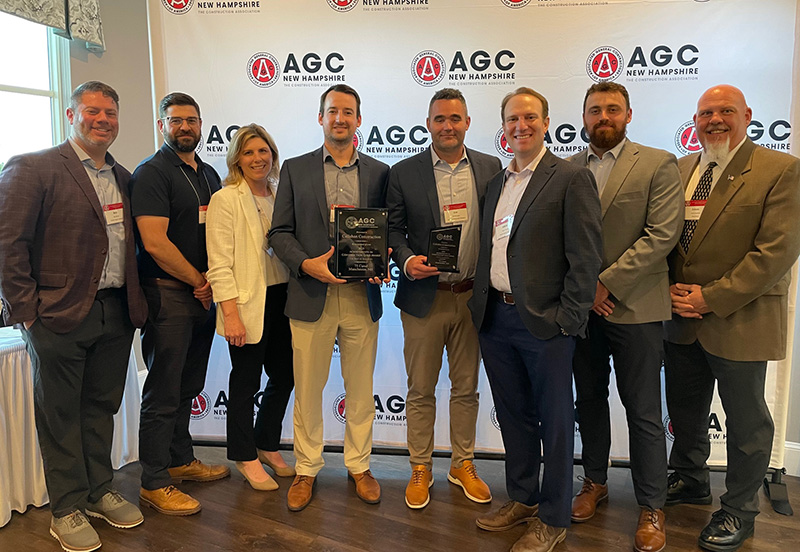News: Construction Design & Engineering
Posted: May 16, 2013
How contractors can avoid landmines during a construction market recovery
Construction companies fail three times more frequently during a recovery than during a downturn. Schleifer, Beware the Recovery: What History Teaches Contractors and Sureties, Engineering News-Record-January 14, 2013. The reasons are simple: contractors are still bidding at recession level profit margins, but are now landing more jobs. However, many contractors do not have the working capital to manage those jobs because lenders are still very reluctant to lend to an industry pummeled by the recession. Lenders drastically reduced credit lines during the downturn and have been painfully slow to restore the same. To make matters worse, material costs are escalating and labor costs are projected to jump significantly as well. The end result: some construction companies are likely to run out of money before completing their projects.
Hopeless? Far from it! Every construction environment (from robust to recessionary) presents challenges and opportunities. Success hinges on understanding the environment and setting forth a strategy to maximize those opportunities. The current environment requires consideration of the following steps. First, owners should insist on inserting a contract provision requiring contractors to prove sufficient capitalization to complete their projects. Many of these provisions are limited to the period preceding commencement of the work. However, the better provisions require contractors to submit this information before and during construction.
Second, owners should consider payment and performance bonds. Although owners will ultimately bear the costs of the bonds, bonds serve two crucial functions. Payment bonds protect owners from non-payment claims including, without limitation, mechanic's liens and attachments. Performance bonds protect owners from contractors who fail to complete projects.
Additionally, bonds serve as a kind of "Good Housekeeping" seal of approval. Contractors must achieve a level of fiscal responsibility to be bonded. Surety underwriters scrutinize contractors' financial information to ascertain whether they are "bondable" and, if so, to what extent. In short, the mere fact that a contractor is bondable should give the owner some degree of confidence the contractor has the fiscal resources to pay its debts and to complete its projects. As noted by Brian Rossi, executive vice president, GenCorp Insurance Group:
"As we exit the Great Recession, albeit slowly, surety credit should be viewed as a precious commodity and an instrument of competitive advantage. While somewhat counter-intuitive, the frequency of contractor defaults is actually escalating as construction economic conditions improve. This phenomenon will encourage the continuation of cautious surety underwriting, thereby creating opportunities for best-of-class contractors to use surety credit to their advantage."
Owners can achieve additional layers of protection through contract terms relating to subcontractors. Specifically, the owner/contractor contract should require the contractor to identify all key subcontractors and material suppliers and to notify the owner immediately of any changes among that group. In conjunction therewith, the contract should include a provision allowing the owner to contact each such subcontractor and material supplier in advance of payment to ensure each has been paid in full. The contract should also give the owner the ability to issue joint checks whenever it has any reason to believe the contractor has not paid a subcontractor or material supplier.
One of the most important contract terms, however, is the requirement that the contractor, subcontractors, and material suppliers sign Lien Waivers and Indemnity Agreements. The owner should ensure its proposed Lien Waiver not only contain the basic Lien Waiver language (e.g., acknowledgement of payment and assurance it paid its creditors), but also an indemnity obligation triggered by any failure of the contractor, subcontractor or material supplier to fulfill a requirement within the Lien Waiver (e.g., failure to pay creditors). Lien Waivers often fail to include indemnity language so owners need to ensure it is included in all Lien Waivers.
In short, all construction environments contain risks and rewards. The present "recovery" phase environment presents the risk of contractor failure. Owners should use properly drafted contracts that include the terms most likely to mitigate the risk of contractor failures so owners can reap the rewards of successful projects.
Drew Colby, Esq., is co-chair of the construction practice group and is partner at Partridge Snow & Hahn LLP, Providence, R.I.
MORE FROM Construction Design & Engineering
Nobis Group awards Robinson and Moreira STEM scholarships
Concord, NH Nobis Group, a 100% employee-owned consulting firm specializing in engineering and environmental solutions across the Northeast, has named the recipients of its 2025 STEM Scholarship: Andie Moreira of

Columns and Thought Leadership

Ask the Electrician: Is summer a prime time for commercial electrical maintenance?
The answer is “Yes!” While January marks the official new year, many businesses view September as a fresh start. This makes summer an ideal time for commercial property owners to schedule long-term electrical maintenance projects.

Careers in Construction Month focus on training and safety - by Joe Camilo
October is Careers in Construction Month, and rarely has it been more consequential. According to our chapter’s national parent organization, the construction industry needs to attract half-a-million new workers in the coming year to meet demand. Addressing that need is a huge job, but we at ABC MA are trying to do our part.

The design-build advantage: Integrated interior design solutions - by Parker Snyder
When it comes to corporate interior spaces for both commercial and industrial projects, partnering with a design-build firm with in-house interior design services can offer clients many benefits. Unlike traditional delivery methods where interior designers operate independently from the design and construction teams, often creating a longer project timeline as cost negotiations and revisions ensue

The rise of incubators and co-working spaces: The latest in life sciences - by Matt Combs
In recent years, the life science industry has witnessed a shift in how companies operate and innovate. One of the key driving forces behind this transformation is the emergence of incubators and co-working spaces specifically tailored to meet the unique budget and schedule needs of startups.







.png)